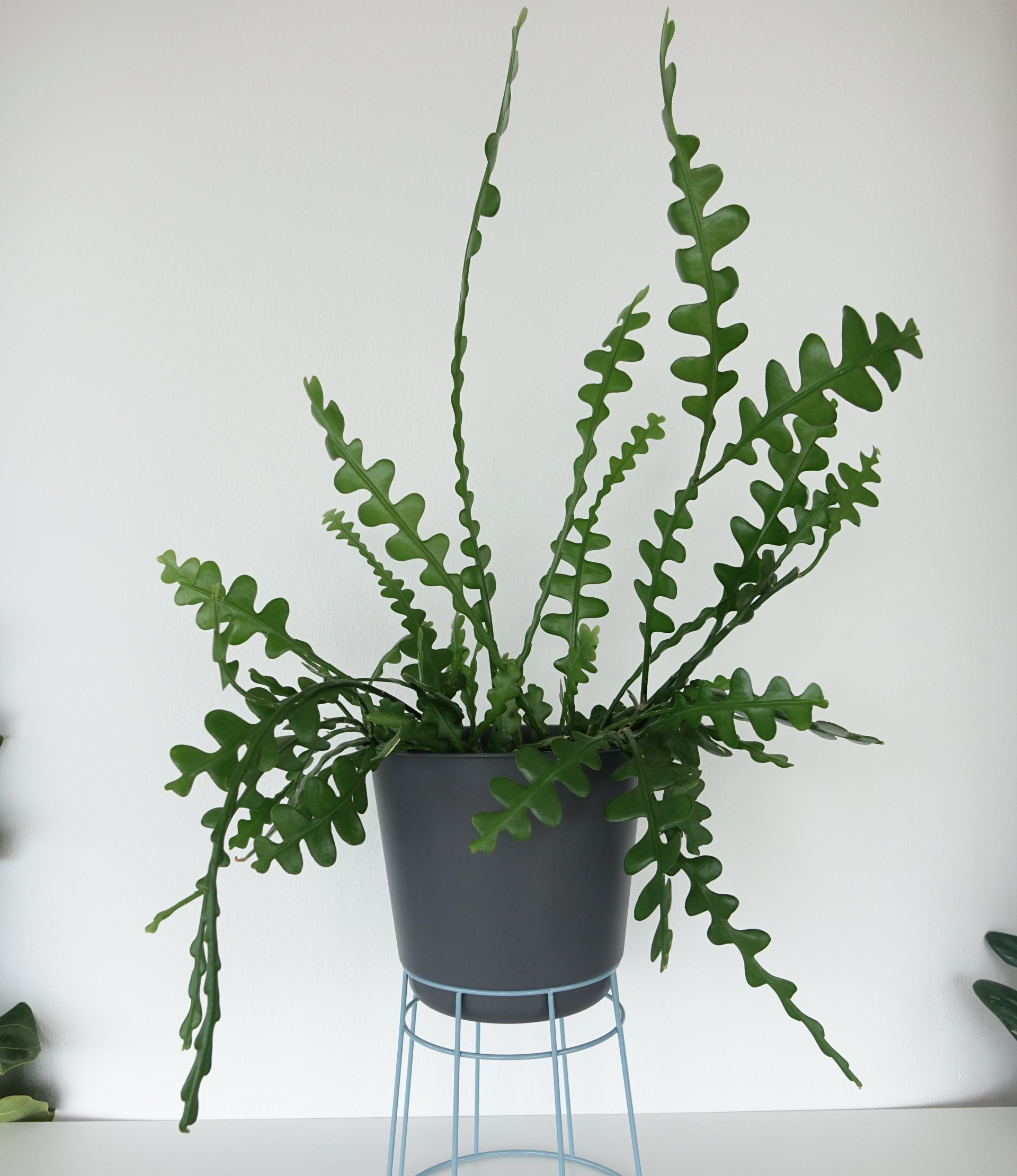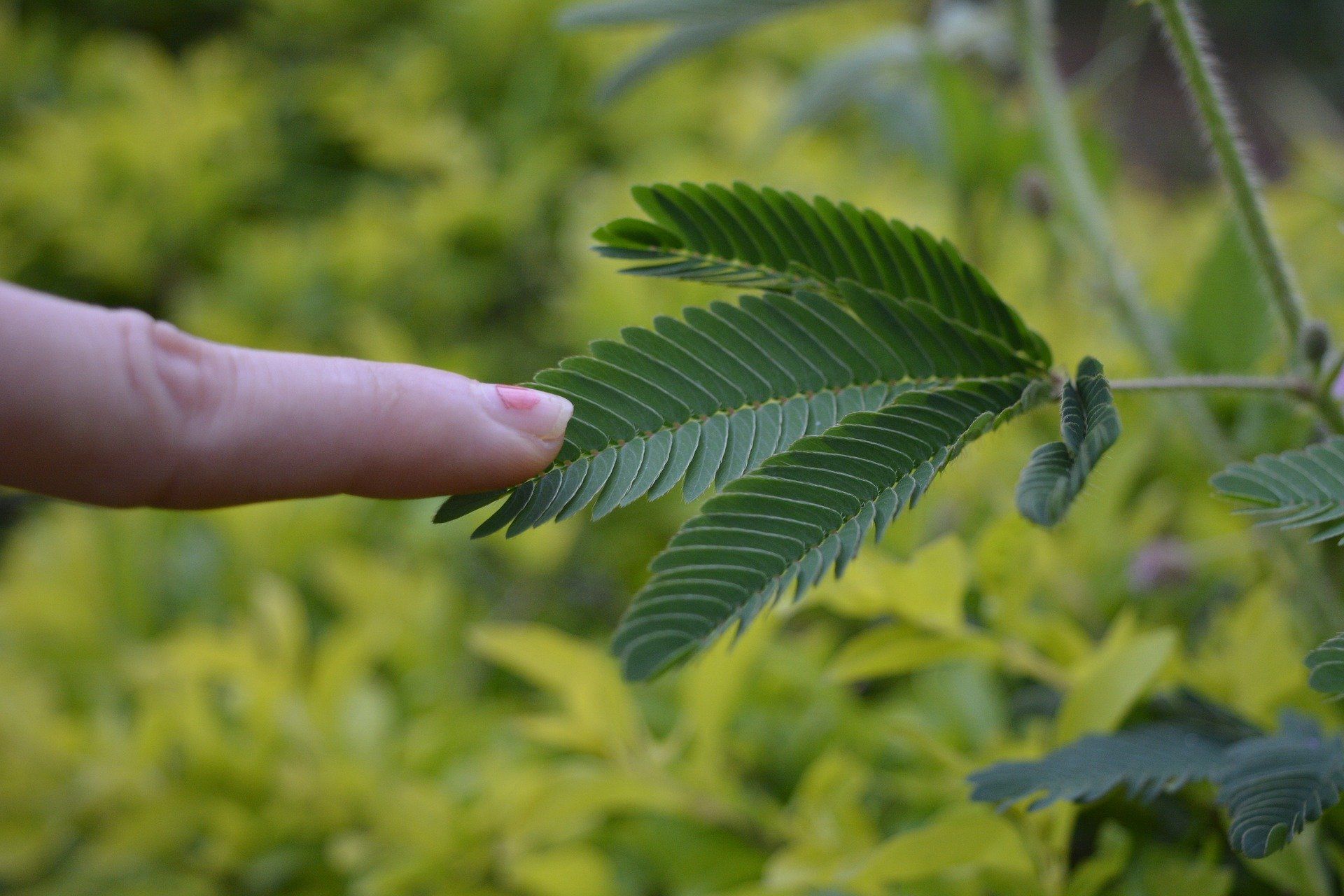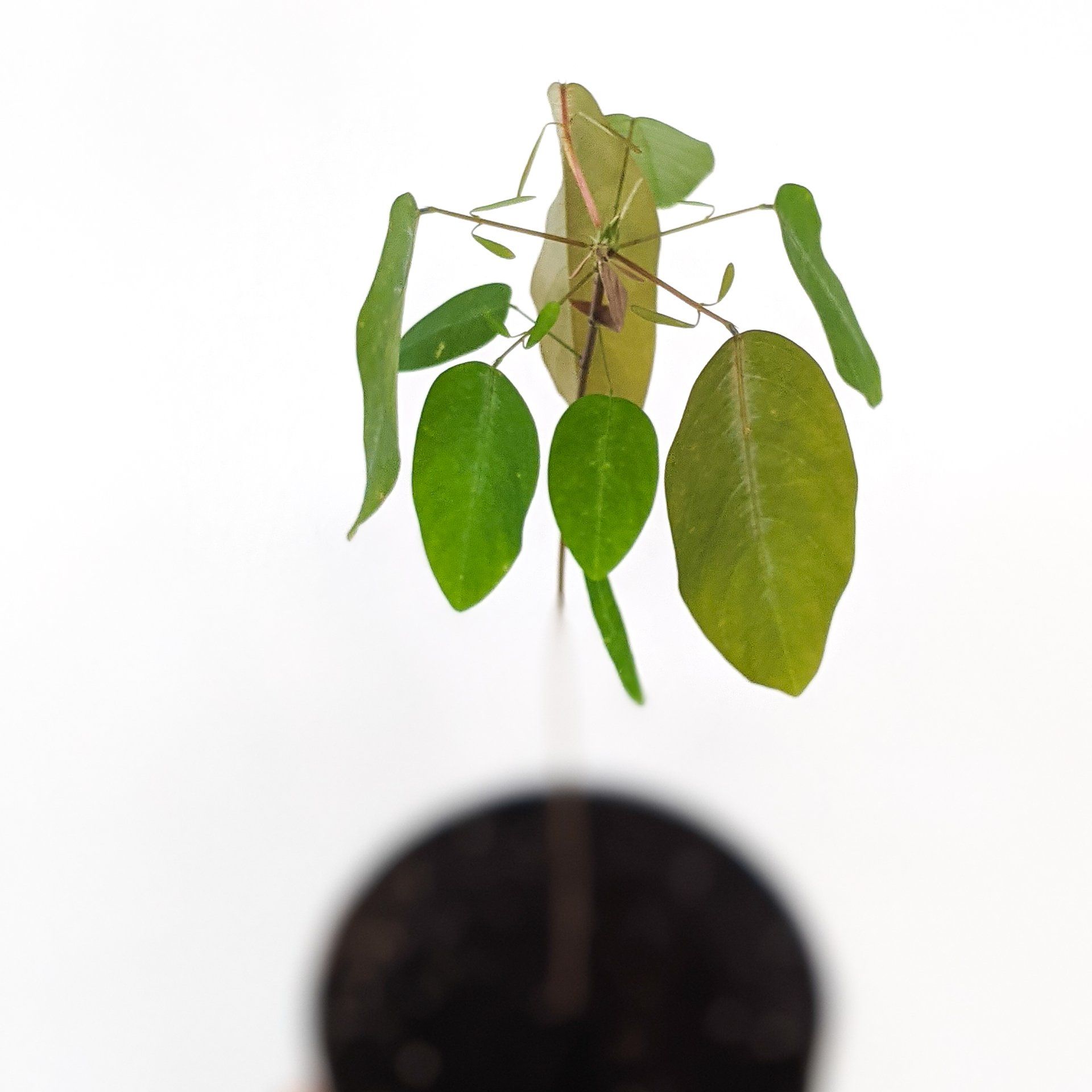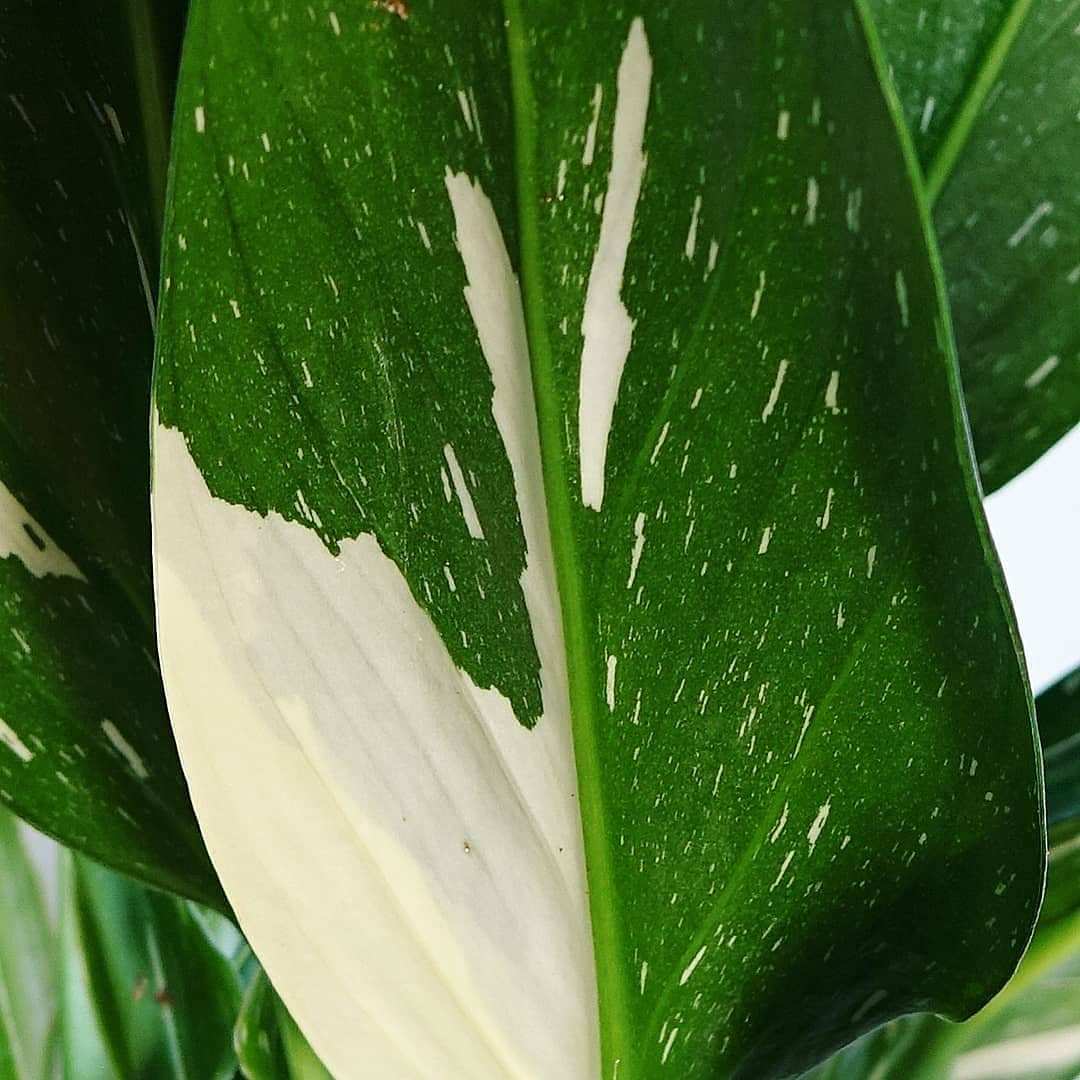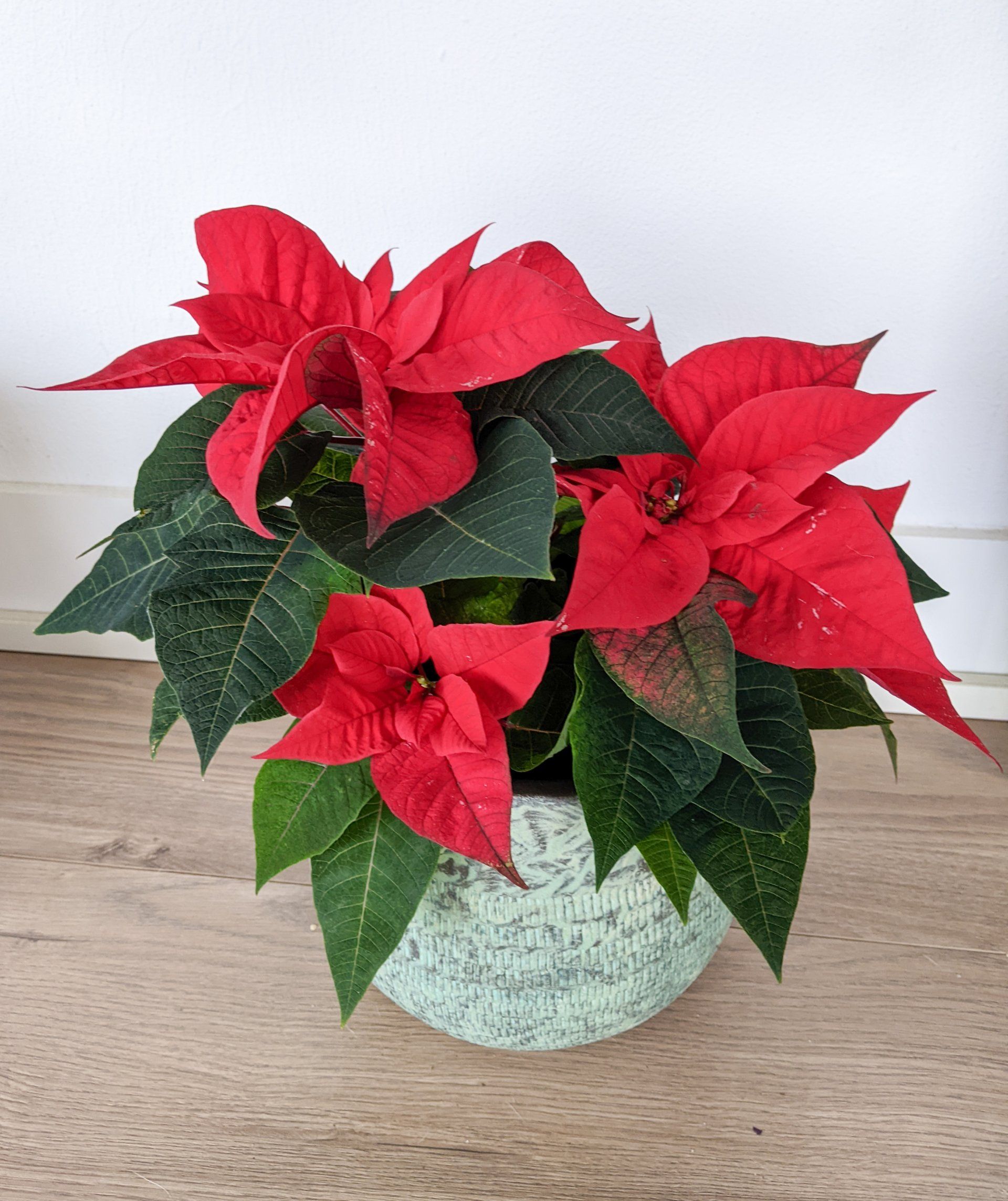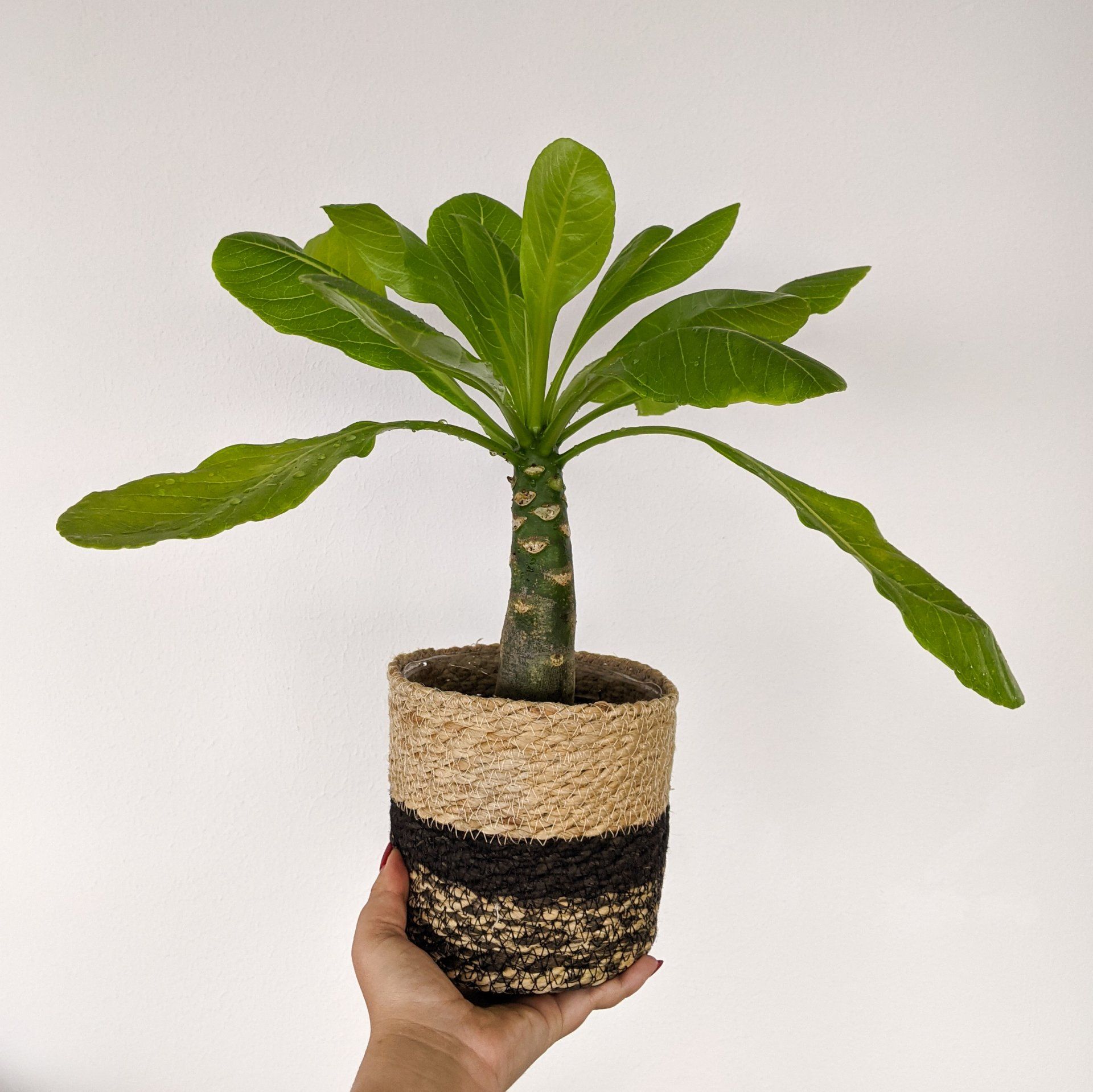555-555-5555
mijnmail@mailservice.com
Famous insta-family: aroids!
Aroids: so diverse!
Are you truly a millennial if you don't have an aroid in your home? Aroids, or arum family, have been a hit on the socials and in urban jungles for years. But this plant group has some members you never thought would be part of the aroids! In Gardeners' World magazine of April 2022, an article by Rogier van Vugt (greenhouse chef Hortus Botanicus Leiden) and myself appeared about this diverse genus.. Download it (Dutch!) or read the translation below.
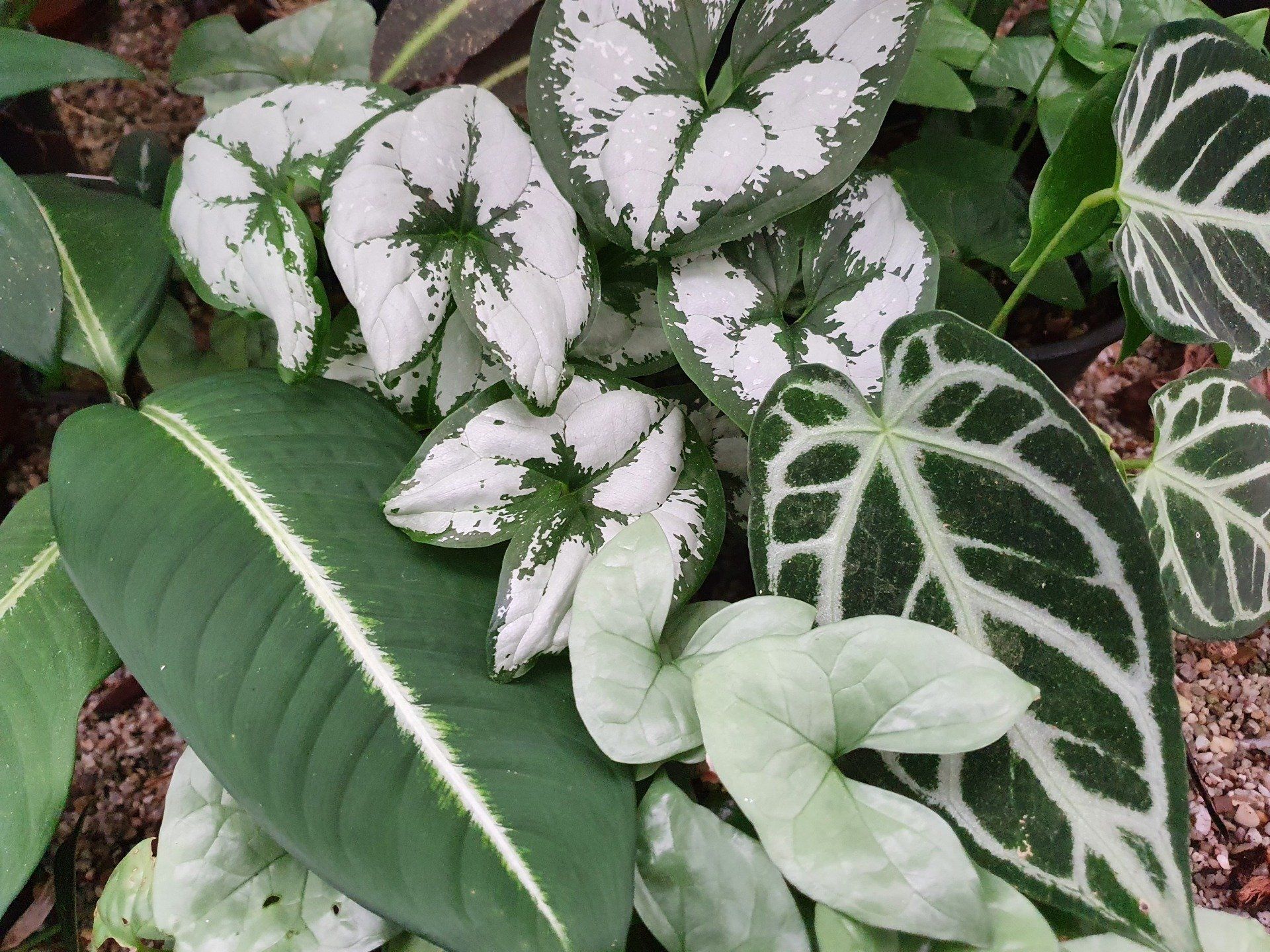
A variety of aroid leaves. Photo: Rogier van Vugt
You can recognize aroids by their inflorescence. However, it is not easy to pollinate them. Watch this ambiguous video about a well-known Philodendron (the article starts below the video):
Rogier: Literally thousands of people came to watch. A row of people more than 100 meters long. And all that for a single plant. But of course, with a name such as "penis plant", you attract some attention. The Hortus in Leiden has a history with this plant. The penis plant is not specifically a species but a complete genus with mini penis plants that are smaller than your hand and giants of several meters. Herbalists immediately recognize an arum in the inflorescence. And if you look at the other members of the arum family, you will soon encounter many familiar faces such as the Monstera deliciosa, the Flamingo plant, the Calla, Philodendrons, but also …. duckweed.
The easiest way to recognize arums is by the inflorescence. Usually there are a lot of small flowers on a stem that are surrounded by a single large bract, the so-called Spatha. The flowers are sometimes replaced at the end of the flower stem by a thickened structure and this as a whole is called the spadix. The thickened end serves to attract pollinators and the flowers of course take care of the offspring.
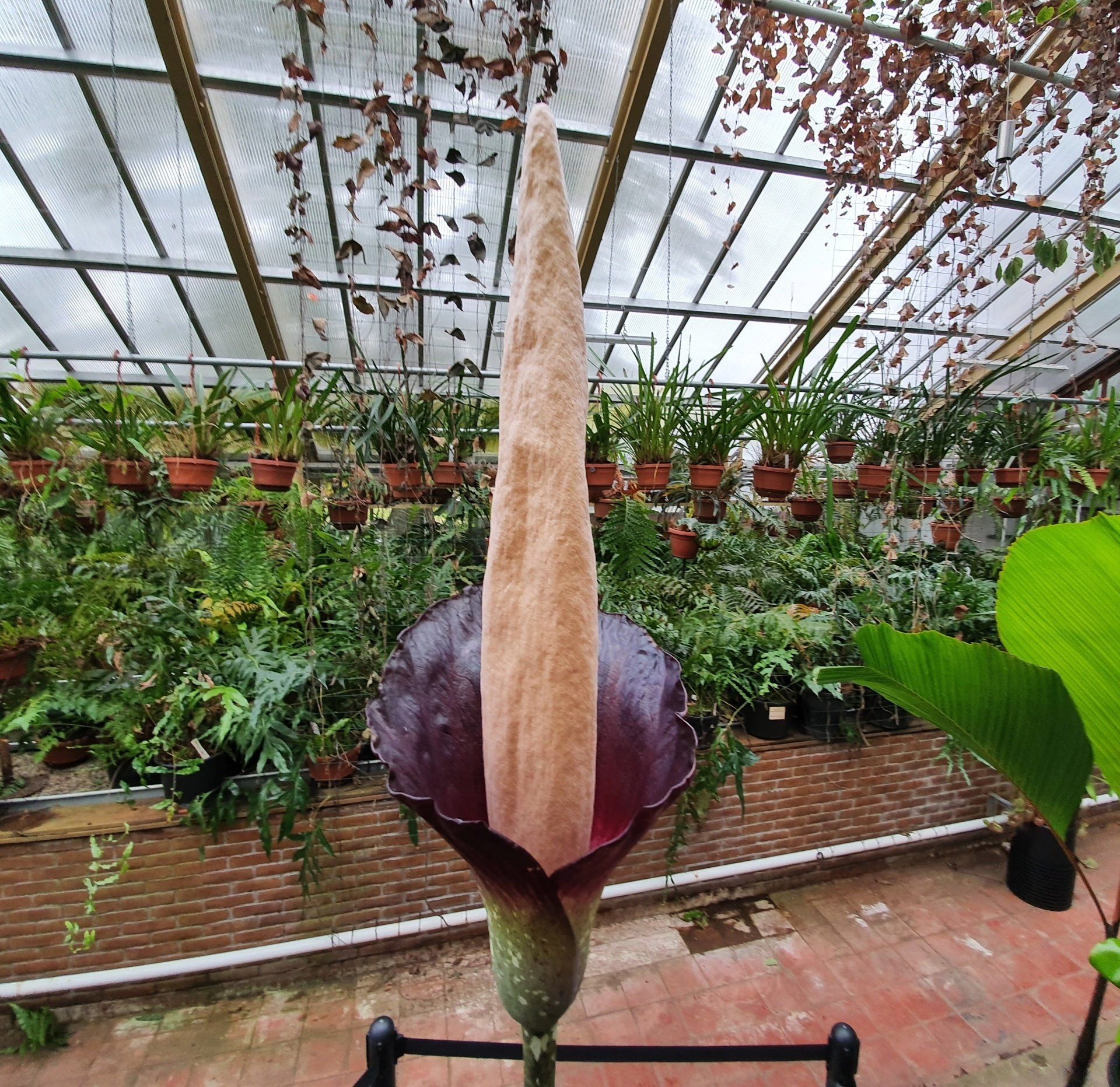
Titel dia
Schrijf uw onderschrift hierKnop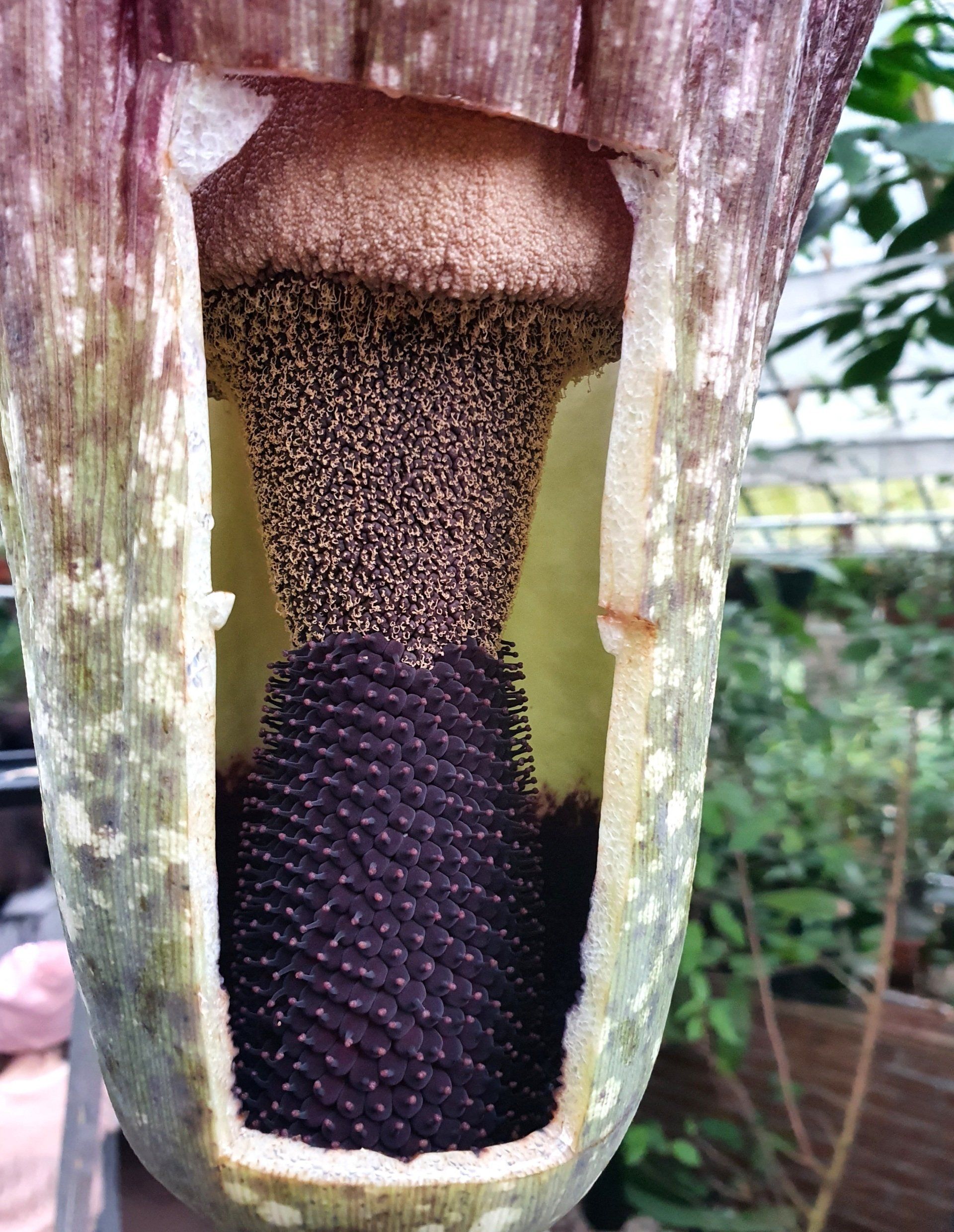
Titel dia
Schrijf uw onderschrift hierKnop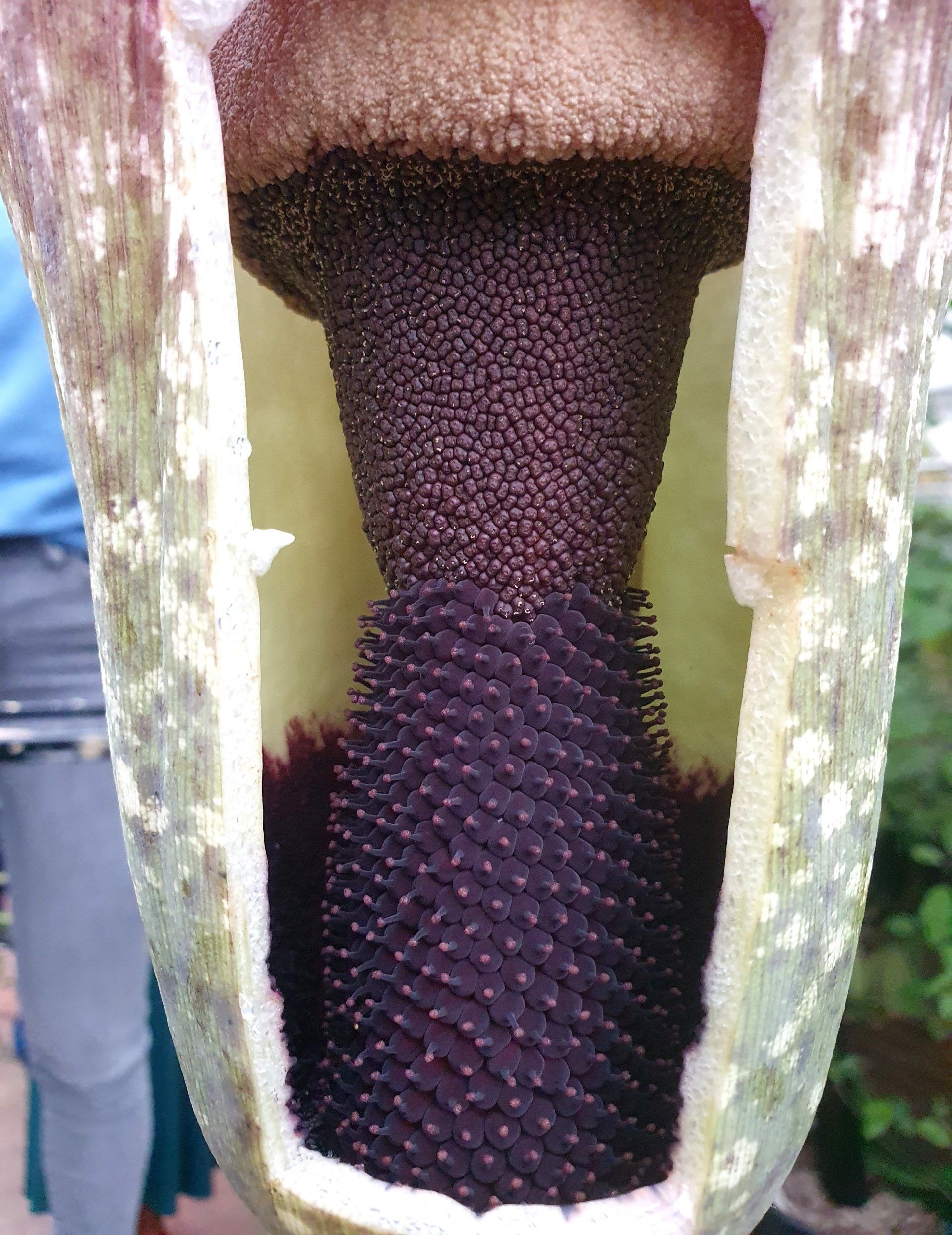
Titel dia
Schrijf uw onderschrift hierKnop
Amorphophallus decus-silvae in Hortus Leiden (Photo: Rogier van Vugt)
The flowers can be mixed on the spadix or sorted by sex. Duckweed is an arum, but it's só small, it only produces a single flower and lacks the spatha. Genetic research shows that this is really related to Monstera deliciosa though.
Due to their versatility, arums have conquered the whole world, you can find them in forests such as our own native Spotted arum, in arid areas such as Dracunculus vulgaris, on water such as water lettuce and duckweed, in water such as the popular aquarium plants Anubias and Bucepahandra and high up in the trees like Anthuriums and Philodendrons. We find the greatest diversity in the tropics and logically that is also where the species that we grow as houseplants come from.
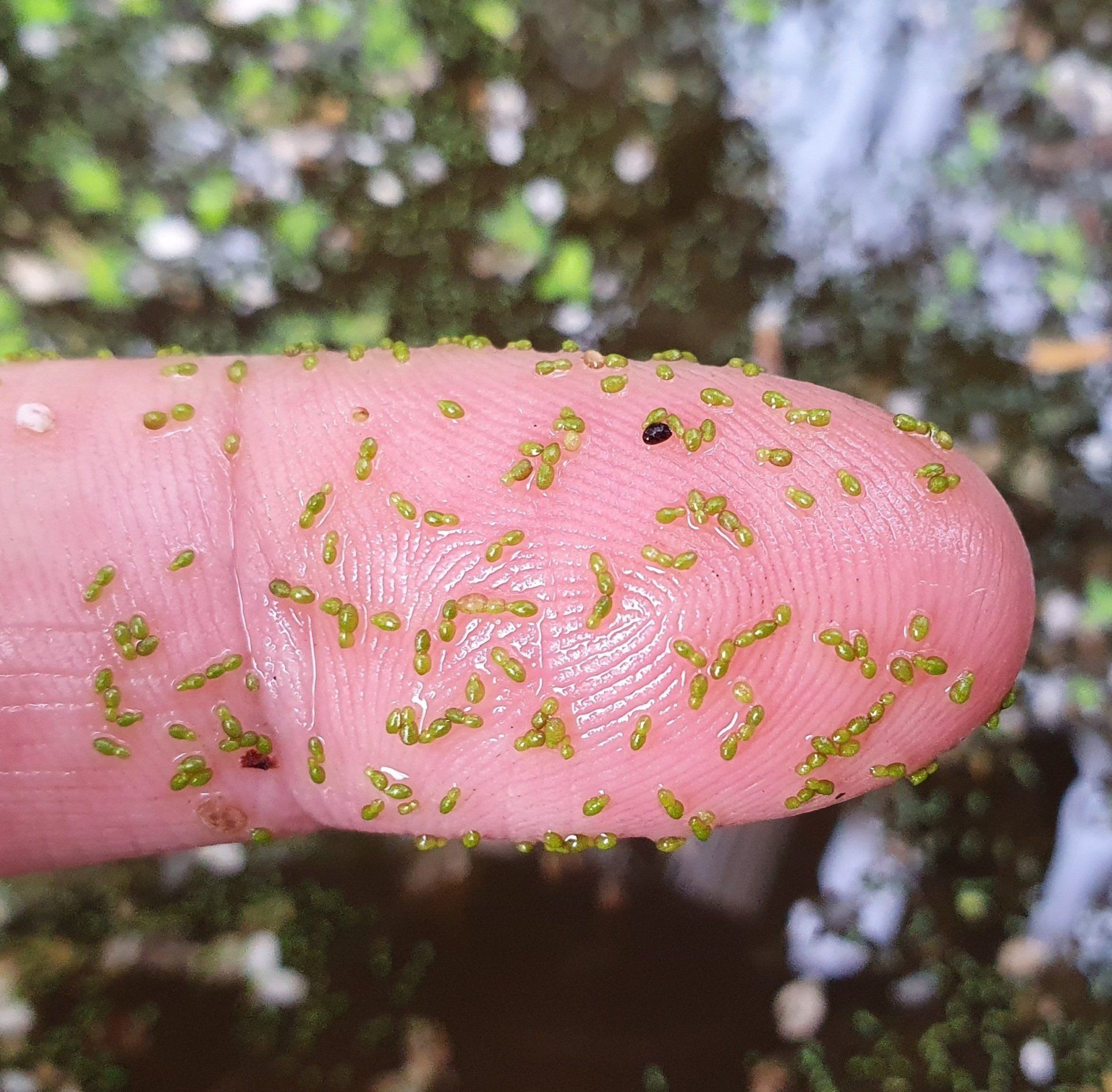
Titel dia
Schrijf uw onderschrift hierKnop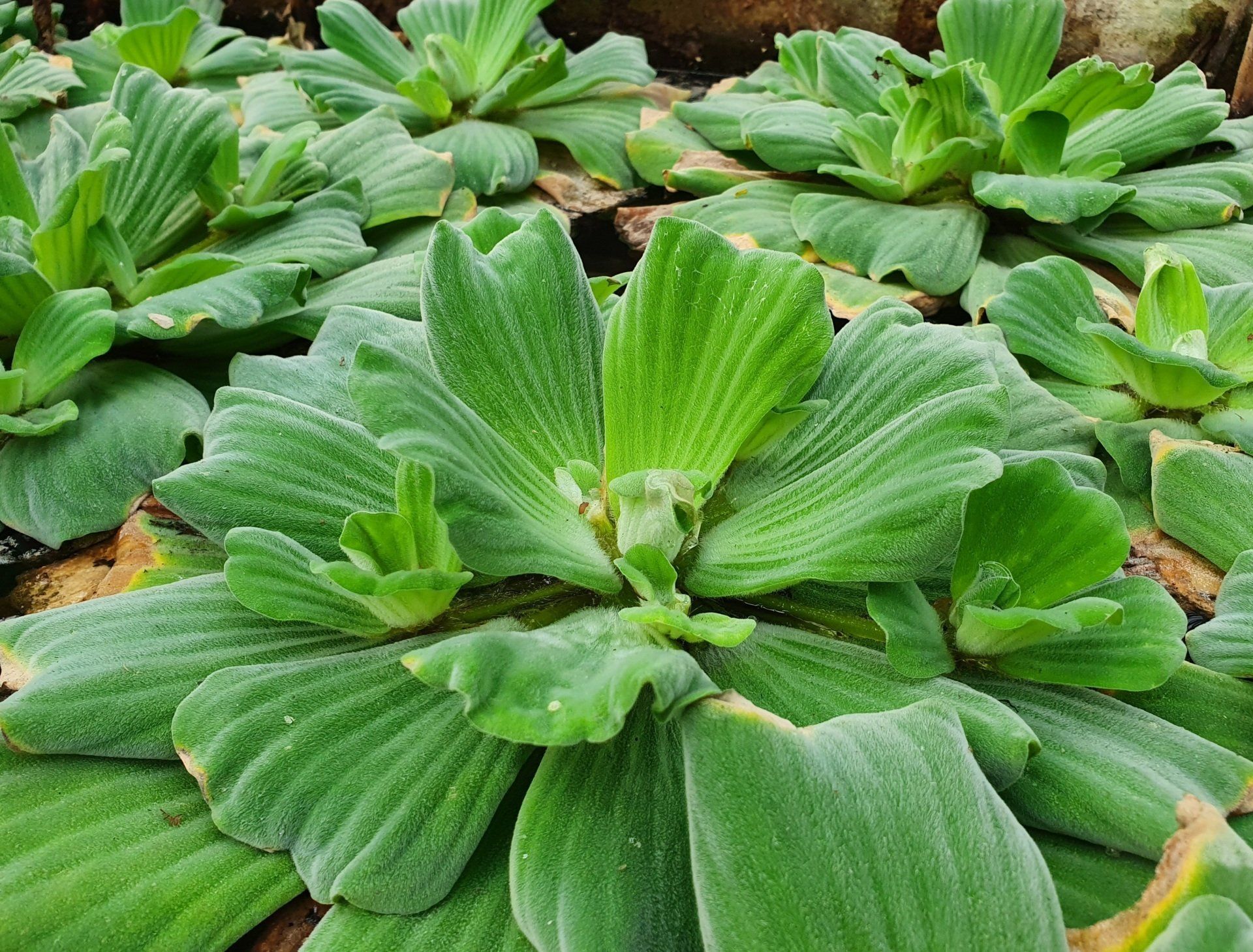
Titel dia
Schrijf uw onderschrift hierKnop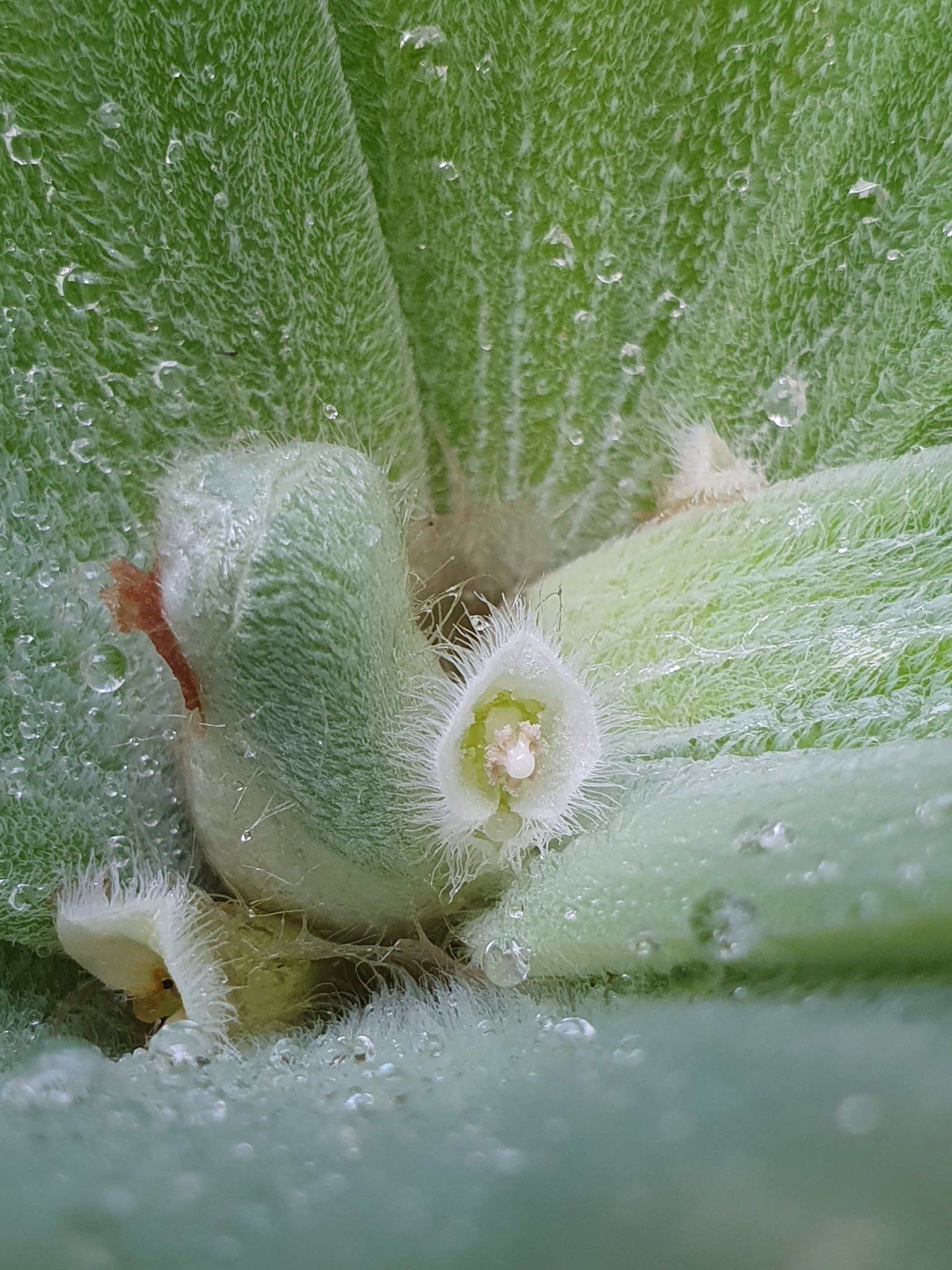
Titel dia
Schrijf uw onderschrift hierKnop
Rootless duckweed (Wolffia arrhiza) is the smallest flowering plant in the world and miraculously related to M. deliciosa! Other two photos: Water lettuce (Pistia stratiotes), leaf and bloom (Photos by Rogier van Vugt).
Marieke: Since the beginning of the newfound love for houseplants, around 2016, aroids have been in demand and they have remained popular ever since. The variegated variants (see our previous article) gave an extra boost. No other genus of plants is so well represented in living rooms, offices and on social media. Chances are you have one at home too!
An exception is that good Peace lily (Spathiphyllum): this extremely strong "student plant" has completely missed the boat when it comes to the aroid hype. For no reasion, because there is nothing wrong with this "normal" houseplant, which produces beautiful exuberant leaves and often has striking snow-white inflorescences. Recently, a colorful variant of this classic came on the market, but it doesn't seem to catch on either. While any Syngonium with a slightly different speck sells for a lot of money – only to drop dead if you look at it the wrong way (okay, I may have a personal feud with Syngoniums…).
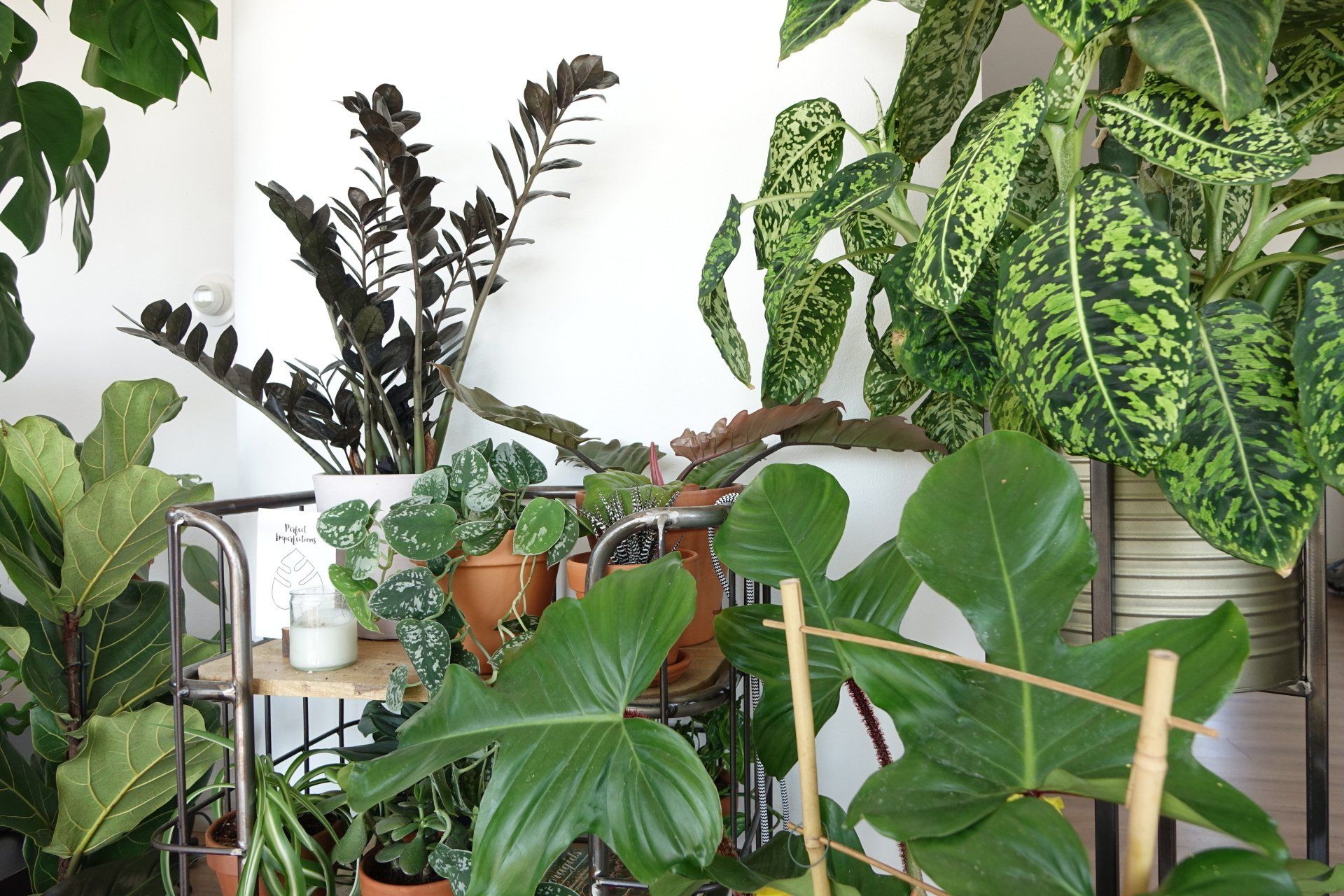
Titel dia
Schrijf uw onderschrift hierKnop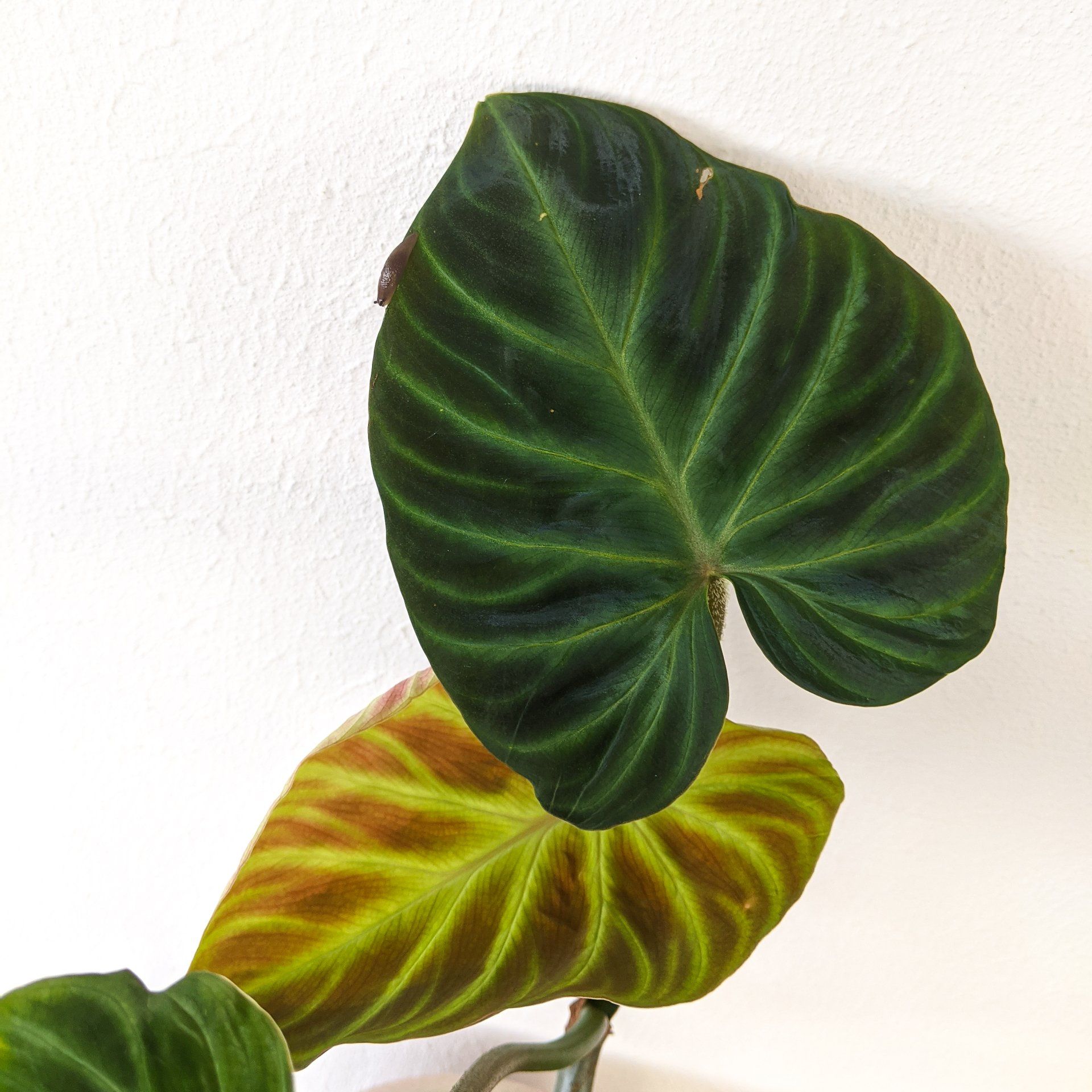
Titel dia
Schrijf uw onderschrift hierKnop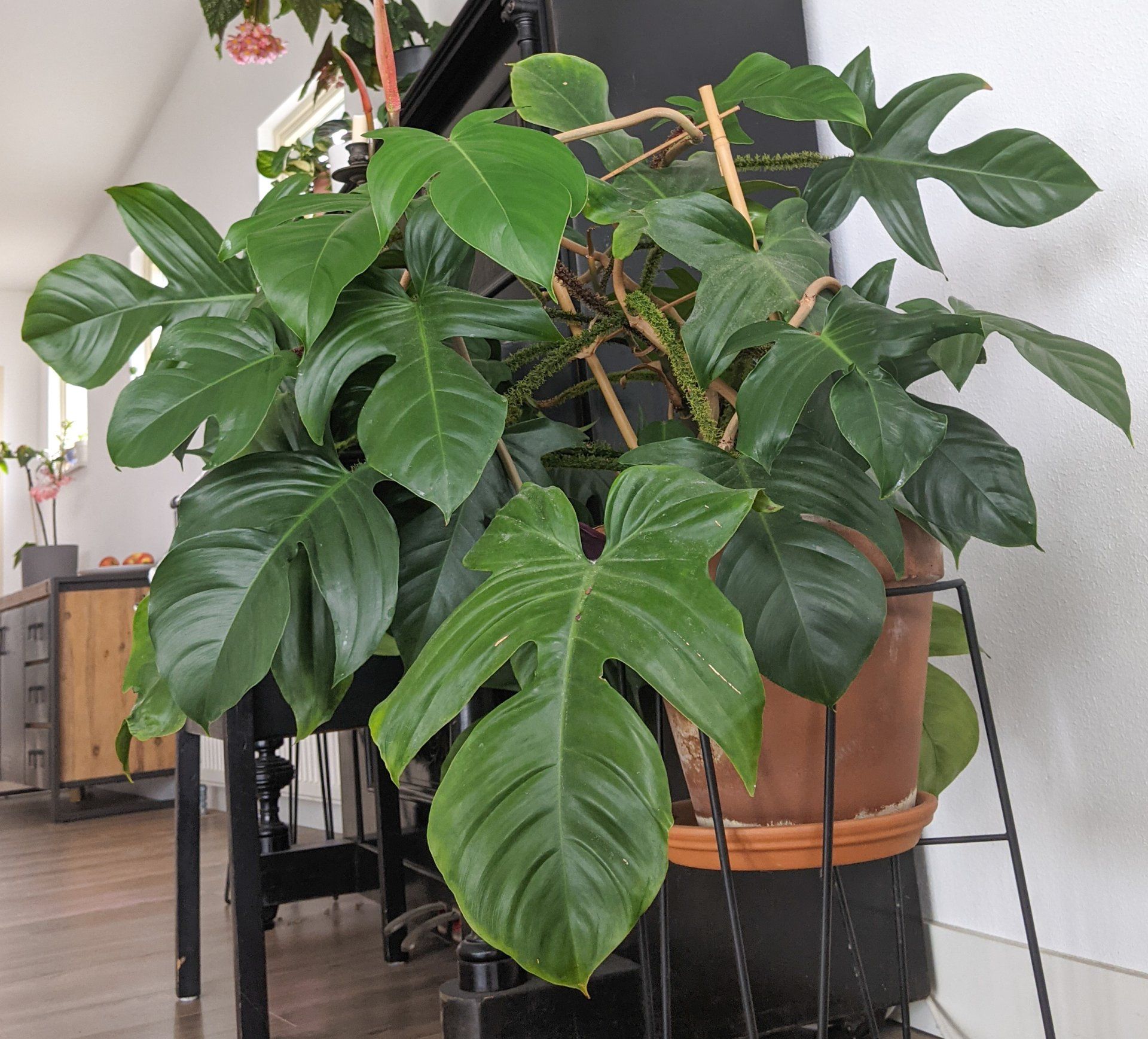
Titel dia
Schrijf uw onderschrift hierKnop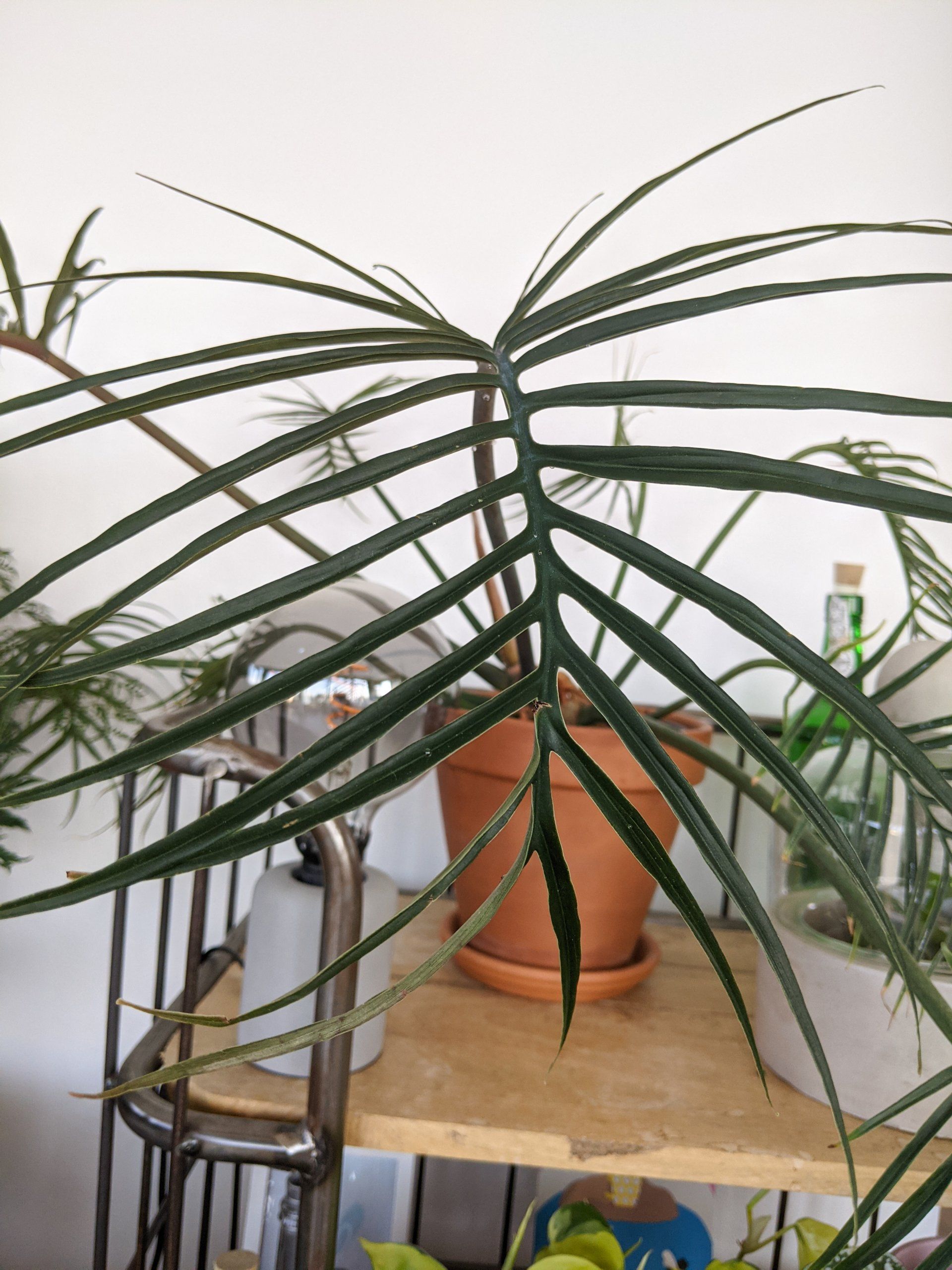
Titel dia
Schrijf uw onderschrift hierKnop
Some more aroids
R: Because of their fantastic adaptability, several species of this family are doing very well in the living room. Especially the fact that they can cope with less light is useful. The most famous species is undoubtedly the Monstera deliciosa or Swiss cheese plant. These plants can often thrive in the middle of a living room, and they have to because they grow huge. They are found in the wild in Central and South America. The latter also applies to the Philodendron species and these have a similar growth habit. There are climbing and compact Philodendrons. They do not have holes in the leaf, but the leaves can have a variety of shapes.
Zamioculcas from tropical Africa has only one species that is cultivated, albeit in a few color variants. Yet this plant, which looks like a cross between a palm and a succulent, is insanely popular. This is not surprising because they are very strong and as a houseplant they last almost forever.
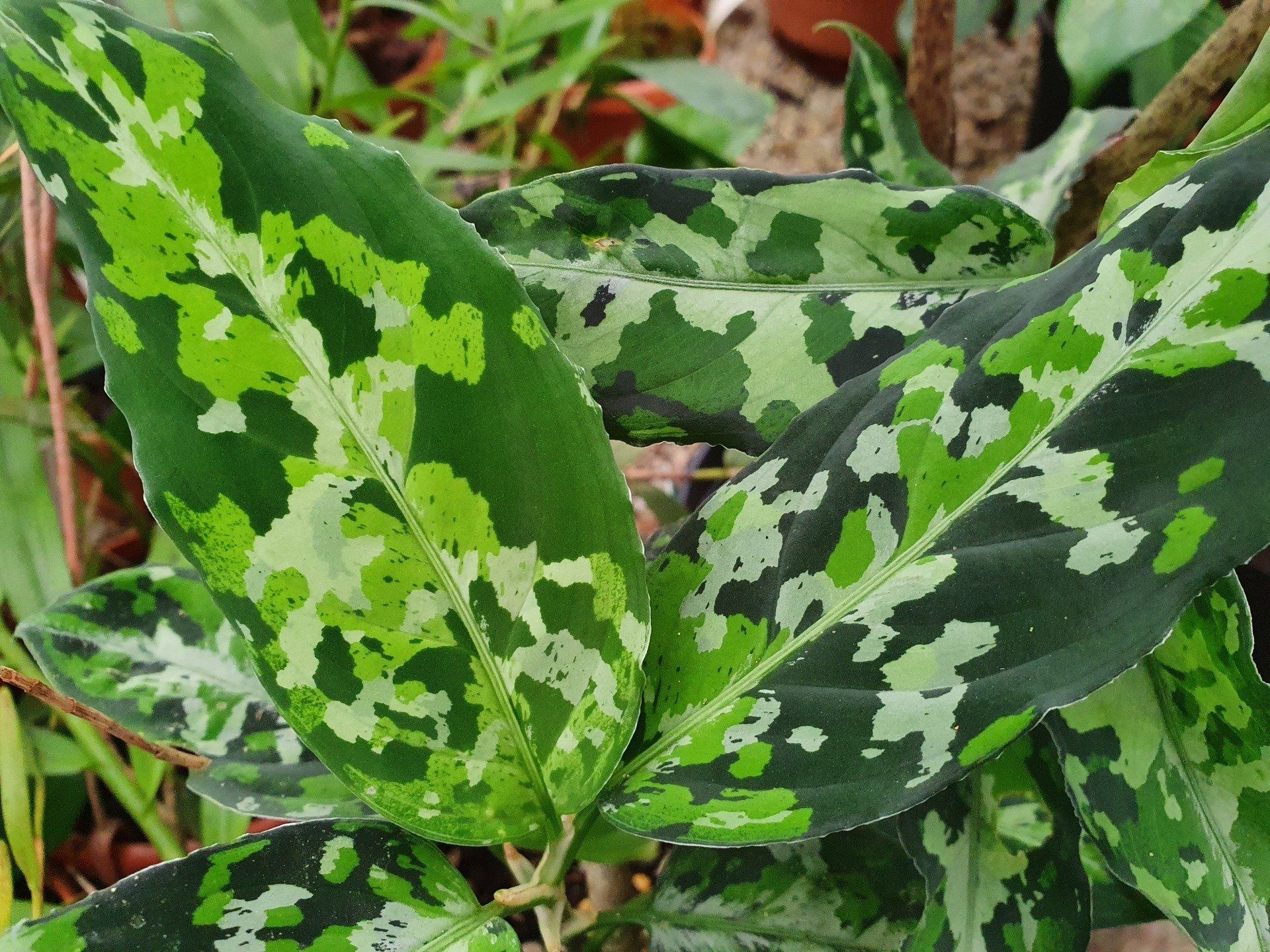
Titel dia
Schrijf uw onderschrift hierKnop
Aglaonema pictum var. tricolor (Rogier van Vugt)
Aglaonema come from Southeast Asia where they grow on the ground of the rainforest. They are often slightly more sensitive to dry air, but nevertheless very easy. The leaf is always simple in shape, but the colors and patterns are endless. One of the most beautiful and also most sought after is Aglaonema pictum var. tricolor. (see photo above)
The genus Anthurium is best known for the Flamingo plant. These are grown for the artistic looking inflorescences, but there are also varieties that are grown for the foliage. A. clarinervium, A, crystallinum and A. vittarifolium are some examples.
Alocasia are more difficult to grow at home, but still very popular because of their special leaf colors and structures, some are metallic and others have a kind of anti-slip profile on their leaves.
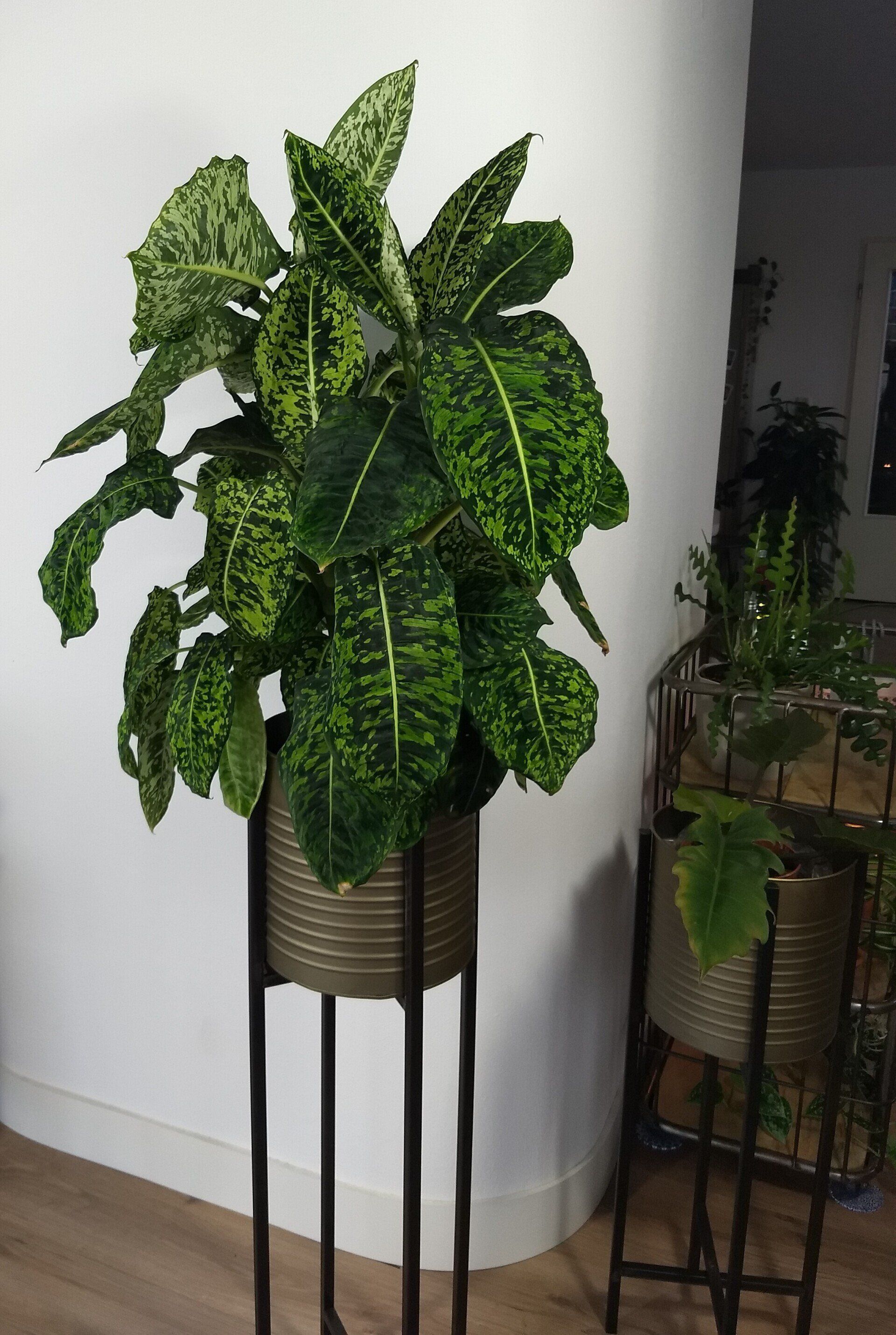
Titel dia
Schrijf uw onderschrift hierKnop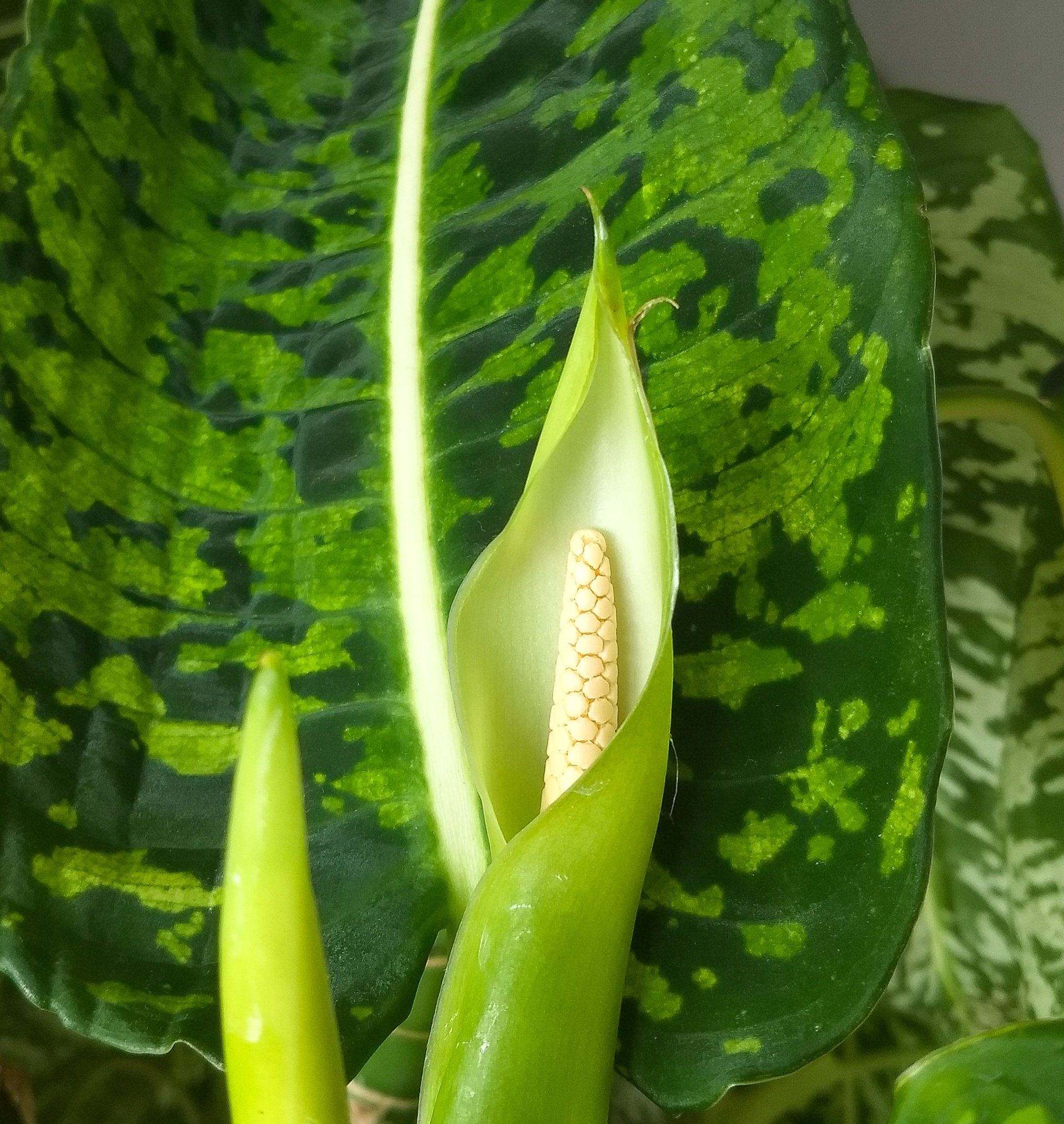
Titel dia
Schrijf uw onderschrift hierKnop
Dieffenbachia "reflector"
M: The care for these plants is generally the same: no direct sunlight, rich, airy soil and high humidity. Our houses usually do not meet the latter requirement, especially not in winter. Some aroids can handle our relatively dry living rooms better than others. A common plant that grows in bunches in garden centers usually survives just fine: think of the zz plant (Zamioculcas zamiifolia) or the well-known Flamingo plant with the shiny inflorescens (Anthurium scherzerianum). If you buy from a specialist (often online), it is important to do your homework to see how much the plant can handle. Although they are sold as "house" plants, some really require a warm, very humid environment. Before you know it you see your - often expensive - green purchase slowly withering away.
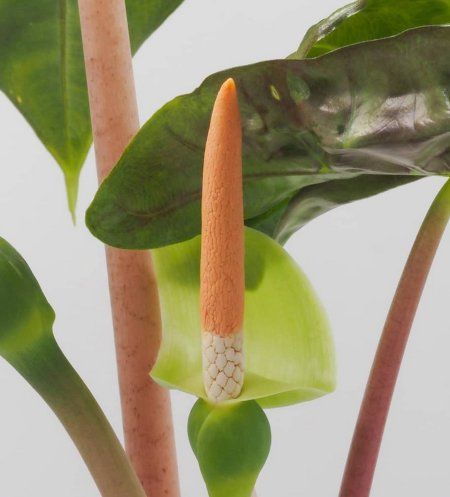
Titel dia
Schrijf uw onderschrift hierKnop
Titel dia
Schrijf uw onderschrift hierKnop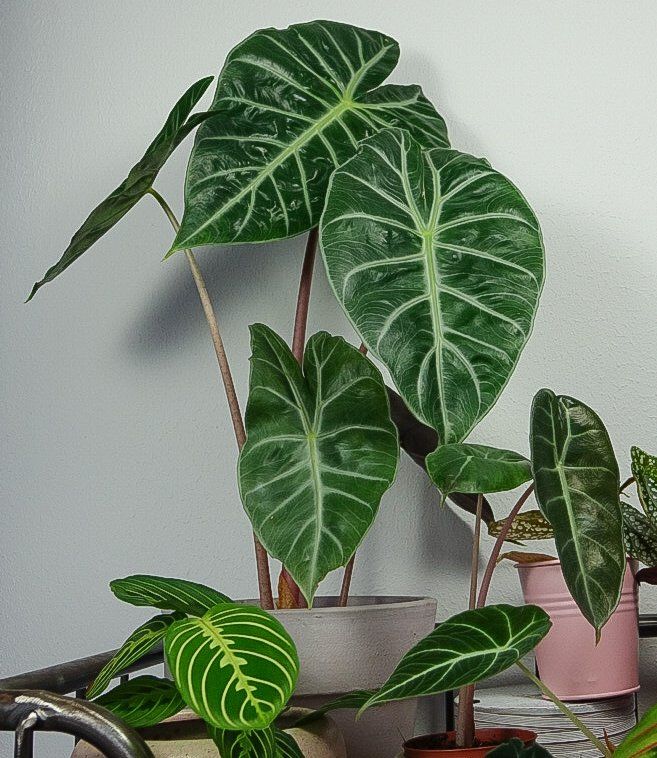
Titel dia
Schrijf uw onderschrift hierKnop
Alocasia "Nairobi Night" is flowering a lot in my living room
R: One of the reasons the aroids have become so popular during the lockdown is because they are often easy to propagate. Of course you can sow many varieties, but the seed of these plants has a very short shelf life and therefore rarely, if ever, for sale. An easy method is taking cuttings, just stick a stem with a pair of nodes and a leaf in airy and moist soil. But because some species were so expensive it almost became an art to get as many cuttings as possible from a single plant. This is how the name “wetstick” finally came to the fore. An attempt to get the total maximum of cuttings that are still viable. Often it is a leafless piece of stem with only a single node on it from which a new plant can grow. But strangely enough, this is no problem at all for Monstera and Philodendron. With Aglaonema and Spathiphyllum, it's better to divide. These plants will grow bushy over time and you can divide them into several pieces when repotting. You can propagate some species from leaf cuttings. The Zamioculcas and the Amorphophallus for example. With this you cut off a leaf segment. Let it dry for a while and then put it halfway into the moist soil. It does take a while before you see anything because a tuber first forms on the wound and a new plant then grows from that tuber.
Questions or remarks? Let me know!
